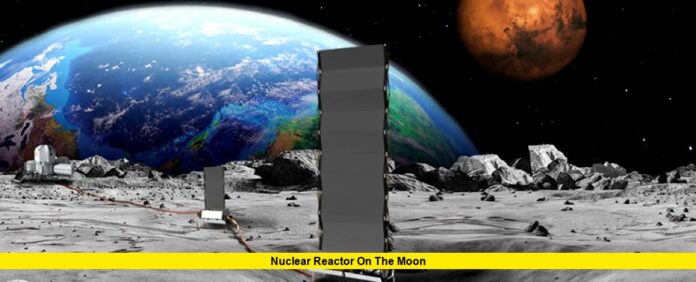The United States has officially launched an accelerated plan to build a nuclear reactor on the moon by the year 2030. This announcement, made earlier today by the interim NASA Administrator, reflects a major leap in U.S. lunar ambitions. The decision comes amid rising concerns over geopolitical competition in space and the need for a reliable energy source to support long-term missions on the lunar surface.
This initiative places nuclear power at the heart of the U.S. lunar infrastructure, with an ambitious timeline and a firm commitment to lead the next phase of space exploration.
Table of Contents
A New Push for Lunar Power
NASA is setting a clear target: deploy a 100-kilowatt nuclear reactor on the moon within the next five years. The move marks a significant upgrade from earlier proposals that focused on smaller, 40-kilowatt systems. This next-generation reactor will provide continuous, weather-independent power during the harsh 14-day-long lunar night.
The newly announced directive includes:
- A 60-day window for industry to submit design and prototype proposals.
- At least two private contractors will be selected within six months.
- The goal of having a flight-ready system for launch no later than 2030.
Why the Rush?
There’s a growing sense of urgency among U.S. space officials. With other countries rapidly advancing their own lunar programs, the United States is taking action to avoid being left behind. Officials have warned of potential “keep-out zones” that rival nations might impose if they land and operate reactors first. By pushing forward now, the U.S. aims to ensure open and cooperative access to lunar resources.
China and Russia have publicly stated intentions to develop their own lunar nuclear systems by 2035. The U.S. wants to be there first—and not just with flags and rovers, but with lasting infrastructure.
Technical Features of the Planned Reactor
The lunar reactor will be built using compact, low-enriched uranium fuel and must operate autonomously for a minimum of 10 years. It will power habitats, mining equipment, communication arrays, and scientific instruments. Due to lunar launch and landing limitations, the system must meet strict criteria:
- Weigh less than 6,000 kilograms.
- Fit within a 4-meter by 6-meter envelope.
- Withstand extreme lunar temperatures.
- Operate continuously through lunar day-night cycles.
The reactor will likely include passive cooling systems, modular shielding, and rugged, fail-safe mechanisms to ensure stability under all conditions.
Private Sector Involvement
NASA plans to collaborate closely with major aerospace and energy companies. The new directive emphasizes public-private partnerships as the most efficient path to meet aggressive development deadlines. While no specific names have been disclosed yet, prior reactor studies have involved companies experienced in both terrestrial and space nuclear systems.
Government officials are expected to finalize contracts with at least two firms by early next year. These selected companies will be responsible for delivering a functional design, completing ground testing, and preparing for lunar deployment.
Strategic Benefits of a Nuclear Reactor on the Moon
A working nuclear reactor on the moon would be a game-changer. It allows astronauts to live and work on the moon for extended periods, even in permanently shadowed regions like the lunar south pole. Solar energy, while useful, is unreliable due to the moon’s long nights and dusty conditions.
Here are the key benefits:
- Sustained Human Presence: Reliable energy for lunar bases, life support systems, and research stations.
- Support for Mining and ISRU: Power for extracting and processing lunar ice, oxygen, and minerals.
- Foundation for Mars Missions: Demonstrating safe and autonomous reactor use paves the way for interplanetary travel.
Challenges Ahead
While the plan is bold, it’s not without risk. Building and testing a nuclear reactor for space use poses unique technical, regulatory, and political challenges. Critics are already raising concerns about safety, potential accidents, and cost overruns.
There’s also the public perception of launching nuclear material into space. However, experts assure that the reactors will use low-enriched uranium, housed in hardened containers with redundant safety measures.
Despite the hurdles, the momentum is clearly building. With today’s announcement, the U.S. has signaled that it intends not only to return to the moon—but to stay.
The race to build the first nuclear power system beyond Earth is officially on. Will the United States reach this historic milestone first? Let us know what you think in the comments below.
